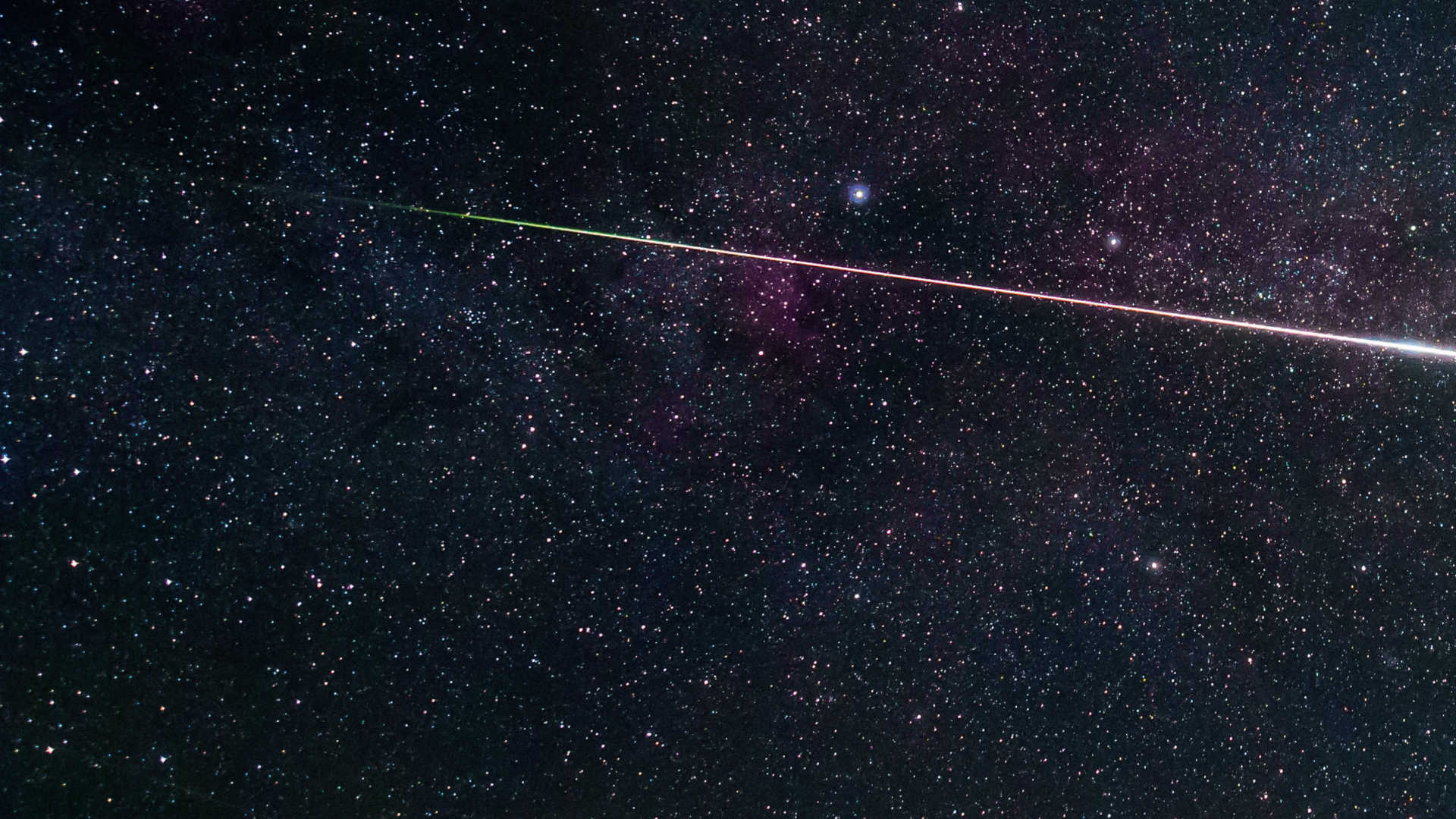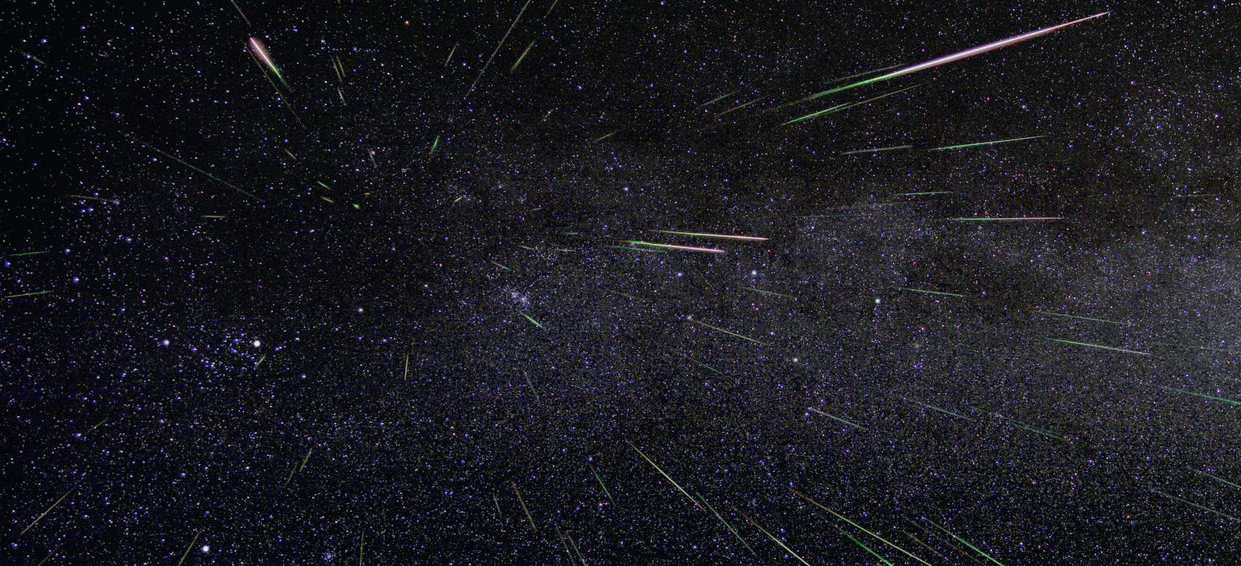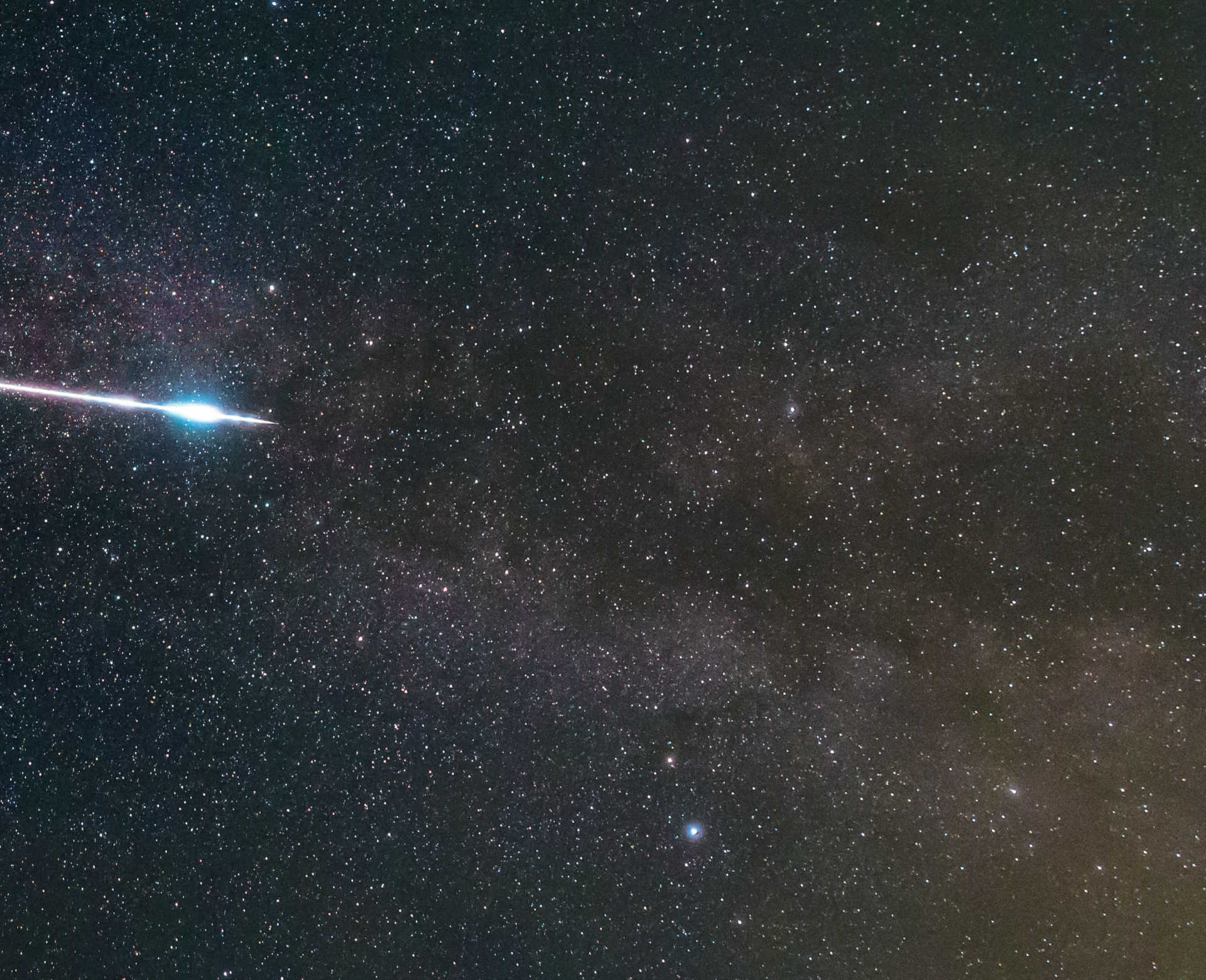Make a wish
Shooting stars occur when particles from an orbiting comet come close to the Earth. An overview of the most beautiful meteor showers.
 A bright Perseid, observed during the Bavarian Telescope Meeting BTM in Pfünz, Germany. Johannes Hildebrandt
A bright Perseid, observed during the Bavarian Telescope Meeting BTM in Pfünz, Germany. Johannes HildebrandtObserving shooting stars
Star fans usually hate any disrupting light in the night sky. However, there is one luminous phenomenon that must have amazed our ancestors: shooting stars – that brief glow that always captivates the observer. In ancient times, people saw the souls of the dead on their way to heaven in shooting stars, and according to old legends you can make a wish if you see one.
In fact, the sources of these flashes of light are small pieces ranging in size from a grain of dust to a pebble, that are known as meteoroids. They hit the Earth's atmosphere at speeds of 30–70km per second and heat up to over 1,000°C. The air along their path is ionised, which means that the atoms lose one or more electrons. In the subsequent reunification of atom and electron, energy is released, which we perceive as a glow: a meteor or shooting star becomes visible. Larger meteoroids cause a particularly bright light trail, whose trajectory may last several seconds. These can cause bursts of brightness or the meteoroid may break into several pieces. They can be so bright that they even cast a shadow. Occasionally, a trace of smoke is visible, which can last for minutes, until it is eventually blown away by the wind. These so-called bolides are really impressive.
Reaching Earth
Sometimes a meteoroid is too large to completely vaporise. Then parts of it may reach the Earth's surface, these are known as meteorites. However, impacts are very rare. Until now, there have been 48 officially recognised finds recorded in Germany. In 30 of these cases, the fall of the meteorite was also observed. A particularly spectacular recent example is the Neuschwanstein meteorite in April 2002. The last find was the Stubenberg meteorite in March 2016.
 The Perseid meteor shower in 2009. The shooting stars all seem to come from the same direction. NASA/JPL
The Perseid meteor shower in 2009. The shooting stars all seem to come from the same direction. NASA/JPLSharing the same source
 A bright Perseid, observed during the Bavarian Telescope Meeting BTM in Pfünz, Germany. Johannes Hildebrandt
A bright Perseid, observed during the Bavarian Telescope Meeting BTM in Pfünz, Germany. Johannes HildebrandtWhilst the individual sporadic meteors that are visible virtually every night travel along completely random paths, on certain nights of the year large numbers of meteors appear to come from the same direction. The point from which their paths originate is called the radiant. These meteor streams arise when the Earth nears a comet’s path as it orbits around the Sun - or even crosses its path, and encounters increasing numbers of particles from the comet. Such meteor streams are named after the constellation from which they appear. The most famous and impressive meteor shower is the Perseids in the constellation of Perseus. Their period of activity ranges from 17 July to 24 August, reaching their peak on 12 August - "the" shooting star night of the year. They are also popularly referred to as the "tears of St. Laurence", since their appearance is close to the feast of the martyr Laurence on 10 August.
Author: Lambert Spix / Licence: Oculum Verlag GmbH
